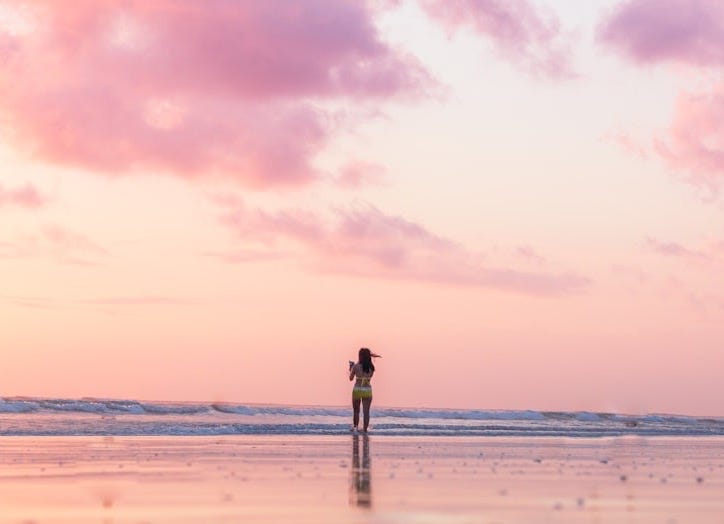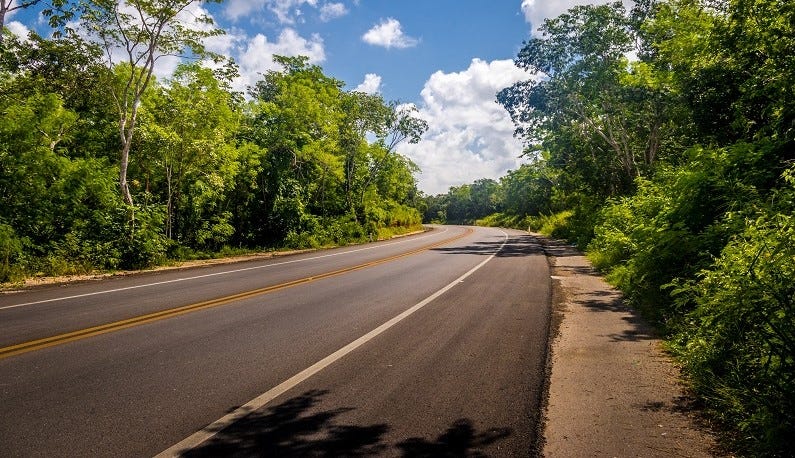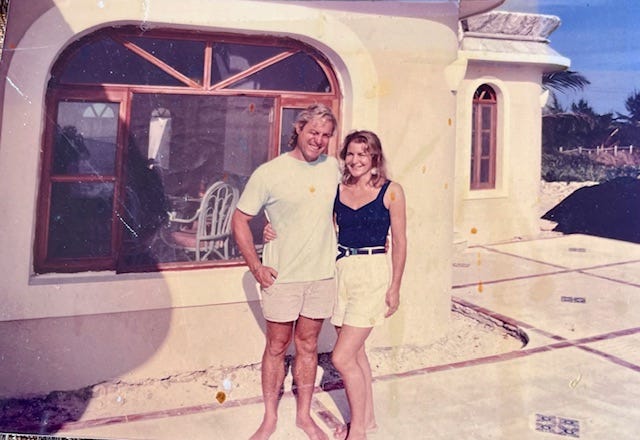Hola Amigos! Welcome to my ongoing saga of moving to Mexico, one chapter at a time, condensed from my memoir Where the Sky is Born. Earlier chapters are in menu at top. It’s Christmas and we’re on the verge of seeing our brand new house, but not before another lesson is learned.
Outside Immigration with our suitcases, I breathed a sigh of relief. I was beginning to feel like Xena, Warrior Princess, each moment a new battle. Could I continue to slay the dragons? Now came our true trial—the real customs agents—the airport boys, known for their vile moods and sleight of hand. The agents at the arrival gates were known to be notoriously loose, my own recent experience proving that to be true. Agents from the customs office wore the badges, talked the talk, walked the walk.
We told the porter our rental car company and followed him to the pick-up area, secured a car, and drove with apprehension to the air freight terminal to see if our goods had arrived. The next test.
Within moments a Mexicana clerk told us our packages were in Cancun. We headed immediately to customs to fill out paperwork and retrieve the boxes. Since the holidays approached we knew the sooner the better for any pickups we might have. In Mexico most government offices close for at least two weeks around the Christmas holidays and we were nearing that deadline.
We pulled the car into a cramped parking area and entered enemy territory. Mexican government offices never failed me in their barrenness. I gazed in horror at the overall deterioration of the building, realizing it was only a few years old. The gunmetal gray of the cement exterior perfectly suited the somber attitude I found inside.
At the front counter I asked who could assist in retrieving our Mexicana air freight.
“I am the proper person. Papers?” an office wonk said as he peered at me over narrow wire frame glasses. What is it with government officials of the world? Do they all exude ennui in epic proportions no matter what their age?
He nodded, looking over the list. “These items are here. If you don’t pick them up today you will have to wait until January 4.”
He pushed the papers back over the counter to me.
“Today is good,” I said, slowly inching the paperwork back in his direction.
“Well then, you’ll need to go to Cancun and find a customs broker who can fill everything out for you. I’ll give you a list of names and addresses,” he said, reaching for a file brimming with papers that looked seriously out of order.
He watched our faces fall, adjusted his glasses, ready to continue. Now that he had our attention, he could go in for the kill.
“Or if you would like to take care of everything right here, maybe we can make some arrangements.”
Of course by arrangements he was referring to a bribe, la mordida, the famous bite.
Paul spoke up quickly. “That would be fine. What do we need to do?”
“Just follow me,” the wonk said with a crooked smile. He pushed away from his desk and began walking quickly towards an exit sign.
We followed him through a maze of lone desks accompanied by ancient Underwood typewriters and decrepit office chairs down a narrow hallway to the back of a sprawling warehouse which served as a holding tank.
Behind a formidable screened-in section we could see assorted boxes, crates, pallets, what-have-you. But none of it looked the least bit orderly. In fact, it was the messiest warehouse I had ever seen. It hardly looked like government property. Some boxes displayed contents already thoroughly mangled, other boxes were broken with items sticking out the top and sides.
Puddles of water appeared in places and uncollected goods showed signs of water damage. Other areas had debris strewn up and down the dusty concrete floor. I had to surmise all these goods belonged to someone and they hadn’t started out in such deplorable condition.
On one side of the room sat five pallets, clearly stamped with a well-known frozen desert trademark in unmistakable lettering. The contents had been uncrated from the original container and left unrefrigerated while awaiting customs clearance. More good planning I thought as I watched the syrupy, once frozen product drip onto an already seriously soiled floor.
If just one corner of this enormous warehouse had been in disarray it might have passed as an indiscretion, but the negligence spread throughout the entire holding tank. Frankly, the entire place was a shambles.
“I can’t believe this is the government customs agency,” I whispered to Paul as we waited for the agent to unlock the fenced-off area.
The customs agent ushered us in, closed the wire fence, and quickly picked up his gait. As he moved towards a pallet with Mexicana stamped cartons and boxes, he let out a low sharp whistle. Immediately I saw a young dock worker sprint towards us from a side aisle, ready to assist,
Within moments, the boxes on the Mexicana pallet were rearranged and there they were—our air freight containers. In a few minutes the agent tallied things on paper, then in his head, and came up with a figure.
His lean form curved forward in a conciliatory gesture as he spoke. His tone was low and conspiratorial. “Fifty US and it’s ready to go now.”
“Fine,” Paul said like a pro, reaching for his wallet. “Here you go.” He extended his hand with a crisp new bill to the agent.
But our wonk was already on the move, pretending he had never seen us, had never entered the back of the warehouse, and had no idea who we were or where we came from.
Quick as a Yucatec lizard catching an unsuspecting fly the warehouse worker moved in, accepted the money, then began to move our boxes off the pallet, carrying them towards the gate. We dutifully followed behind, amazed at the education we received each time our feet touched Mexican soil.
As the worker helped load our boxes into the rental car, another man with a clipboard came up, gazed into the vehicle, asked for our papers. We handed him our copies, he looked them over, nodded and walked toward the parking area.
Assuming we’d cleared customs we started the car and cruised towards the gate. At the gatekeeper’s tower we were stopped again, scrutinized along with our boxes, and finally waved on. It was the last checkpoint between us and the road. Checks and balances, the Mexican motto.
“Whew! What an ordeal! But we’re home free! Feliz Navidad!” I shouted as Paul gunned the gasping four-cylinder engine. We were finally on Highway 307 heading towards Puerto Morelos.
The 20 minute drive south to Puerto Morelos always brought me peace of mind. Once past the mandatory army check point near the airport turnoff, the two-lane road narrowed and low green jungle dominated the landscape. It was truly a pastoral scene, with only the pavement to remind me that I was connected to something. There were no billboards, no road signs, no street lights, no fences.
When first we traveled to the Yucatán, I had expected a different type of rainforest. I thought the trees would be tall as redwoods with bromeliads and orchids everywhere, maybe flocks of parrots, and monkeys.
These were basic components of the Yucatán tropical rain forest, but it had a lower jungle canopy. As the Costa Maya became more populated, I had to travel farther off the beaten track to find extremely tall tropical hardwoods. For those, I traveled inland, off the coast route and into Chiapas or southern Campeche.
On display were redwood size tropical hardwoods with buttresses extending outward like gigantic cloved hooves, eliciting a feeling of having stumbled onto a fairy wonderland. Howler monkeys lived in these yet uncut primordial forests, a backdrop to Palenque’s impressive pyramids, and also in the wilderness area surrounding Calakmul.
There was an earthy solitude to the northern Yucatán’s low-lying jungle. This feeling took hold as soon as the road turned southward. Then came big sky—so big the Maya called it Si’an Kan, or where the sky is born. Clouds here were grand and billowy, beyond Maxfield Parish, but at day’s end, in the same palate of colors. I drew in a breath, taking it all in. Paul looked over and smiled.

“You’re very close to seeing your Christmas present—a brand new house!”
“Very close,” I said as we passed Crococun, the crocodile farm, just a few miles from the Morelos turnoff. Then before I knew it, we were at the crossroads by the Pemex station turning onto the narrow road leading into town.
The next kilometers crawled by. Finally we were on the washboard beach road, driving to our new house, Casa Maya.
At last we saw it.
Pulling into the Mayan rock driveway made from what was the sole remainder of Barry’s property after the hurricane, I saw the final product. The mahogany door was wrapped like a Christmas present with an oversized red velvet bow, as large as the door itself. Just atop the entryway was an effigy of a Maya god painted white with long hooks extending out in an upward curve.
An air of mystery embraced the house thanks to the façade that simulated a Maya pyramid, just as Enrique had promised. As we exited the rental car, Enrique popped his head out the door and shouted, “Feliz Navidad!”
“It’s incredible! It looks like Chichen Itza! I love it! What Maya god’s on top of our entryway, Enrique?”
“Chac, Rain God. He’s the most powerful because the Yucatán has no rivers. Rain is a blessing.”
“Bienvenidos!” Joe Marino said, standing slightly behind Enrique. “Are you getting the Cliff’s Notes version of Maya gods? Welcome!”
The next half hour was like a dream as we walked from room to room, cooing in unison about the quality of the workmanship, the dynamics of the house, the views. We took it all in—mahogany everywhere, the built-in bookshelves, Mexican tile floors, niches for Maya art. A great deal of the finish work had been done with little direction from Paul and me, which clearly showed the amount of initiative Joe and Enrique used when a design decision needed to be made and we were thousands of miles away. The finished product couldn’t have been better.
So this is Casa Maya, I thought. It did seem like it had taken a millennium to reach this lovely culmination, but that was 999 years before we met Joe and Enrique. Their portion of the project took precisely one year to complete, exactly as planned. And it came in on time and on budget. In Mexico, of all places.
That night after Joe and Enrique left and Paul had fallen asleep, I crept into the living room. While still in San Francisco I bought a special incense from a store in the Mission that sold religious items for churches. I also had two heart-shaped candles I’d saved for this occasion. In front of the living room window, facing the vast Caribbean I prepared a makeshift altar. The house needed a blessing.
Who do I pray to? I began lighting the incense and candles. As the musky odor of incense drifted throughout the room, a night breeze picked up off the ocean and the candles began to flicker.
It will come to me . . . Chac!
“Chac, God of Rain, bless Casa Maya and keep it safe. Ixchel, Mother Goddess, bless this house and make it a safe place for all who come here.”
I remained there for a time, feeling grateful to the gods that allowed me to culminate this journey, and first and foremost, for allowing it to take place.
The rains did not start immediately; they waited until the following day to begin. It rained for two full days and nights. I kept asking myself what had I said to Chac.
When visitors come to Casa Maya and ask about the effigy above the entryway, I tell the story of the Rain God, how the house was built in his honor, and how he showed his gratitude by letting the skies pour down rain days before Christmas, years earlier, his blessing on Casa Maya.
If you’re interested in supporting independent journalism and writing, please consider a paid subscription to Mexico Soul. This is a free newsletter. I don’t paywall any of my posts, but you can choose to pay if you like what I deliver. It would mean the world to me and will keep you up to date on my posts and chapters from Where the Sky is Born, detailing how we bought land and built a house in a small fishing village on the Mexico Caribbean coast. Not to mention a bookstore, too! All for $5/monthly or $50 per year.
If you enjoyed this article, please remember to hit the heart button to like it.
Backstory—Puerto Morelos sits within 100 miles of four major pyramid sites: Chichen Itza, Coba, Tulum and Ek Balam. By living in close proximity to this Maya wonderland we pyramid hopped on our days off from Alma Libre Libros, the bookstore we founded in 1997. Owning a bookstore made it easy to order every possible book I could find on the Maya and their culture, the pyramids, the archeologists who dug at these sites and the scholars who wrote about them, not to mention meeting archeologists, tour guides, and local Maya who popped into the store. I became a self-taught Mayaphile and eventually website publishers, Mexican newspapers and magazines, even guidebooks asked me to write for them about the Maya and Mexico. I’ll never stop being enthralled by the culture and history and glad there’s always new news emerging for me to report on right here in Mexico Soul. Please share this post if you know others interested in the Maya. Thank you!










Nice writing Jeanine! I was sweating with you as you went through customs and the payout!
Great ending to your home building saga, Jeanine! I know it’s not truly the ending, but the end of an important chapter and a milestone. Nice to see all that perseverance and hard work rewarded!